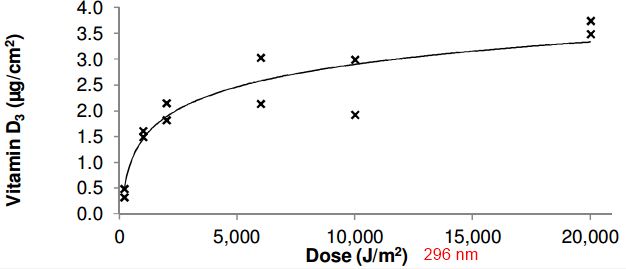Vitamin D produced in pig skin by 296 nmeter UV-LEDs
Investigation of the effect of UV-LED exposure conditions on the production of vitamin D in pig skin
Food Chemistry, Available online 24 May 2016, doi:10.1016/j.foodchem.2016.05.155
Line Lundb?k Barnkoba, Aikaterini Argyrakib, Paul Michael Petersenb, Jette Jakobsena, ,

The dietary intake of vitamin D is currently below the recommended intake of 10-20 μg vitamin D/day. Foods with increased content of vitamin D or new products with enhanced vitamin D are warranted. Light-emitting diodes (LEDs) are a potential new resource in food production lines. In the present study the exposure conditions with ultraviolet (UV) LEDs were systematically investigated in the wavelength range 280-340 nm for achieving optimal vitamin D bio-fortification in pig skin. A wavelength of 296 nm was found to be optimal for vitamin D3 production. The maximum dose of 20 kJ/m2 produced 3.5-4 μg vitamin D3/cm2 pig skin. Vitamin D3 produced was independent on the combination of time and intensity of the LED source. The increased UV exposure by UV-LEDs may be readily implemented in existing food production facilities, without major modifications to the process or processing equipment, for bio-fortifying food products containing pork skin.
Publisher wants $35 for the PDF
LEDs used

